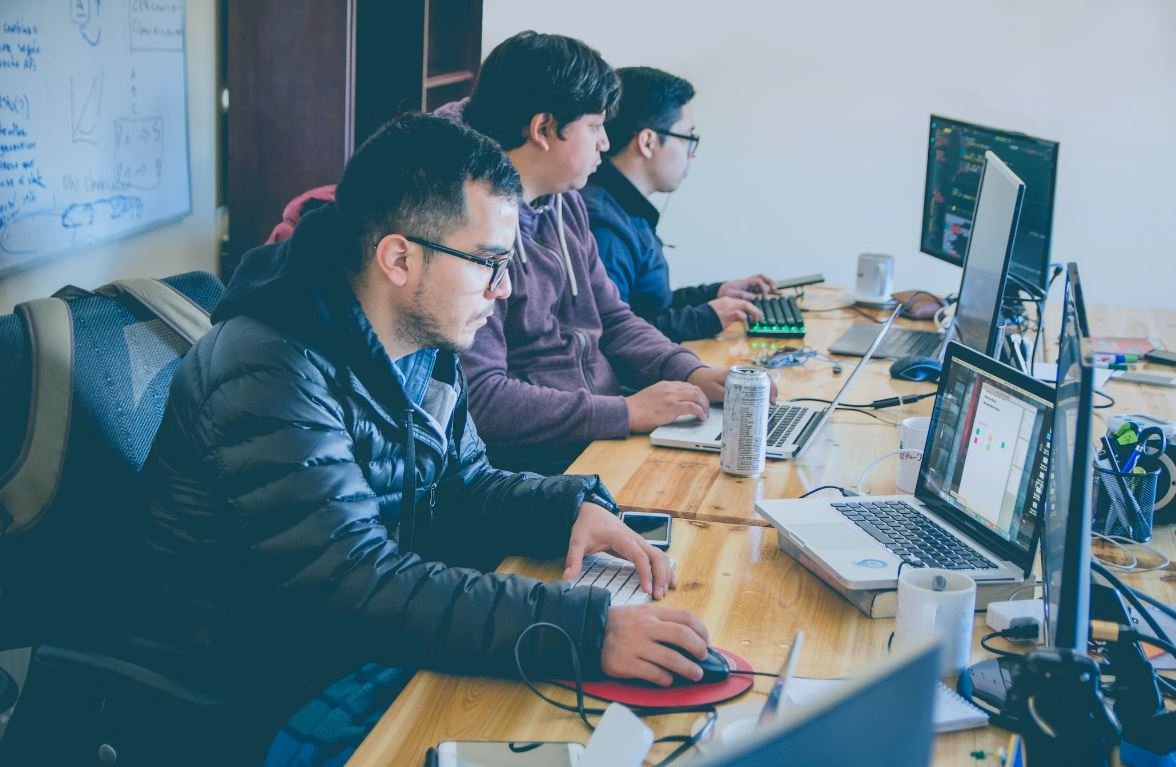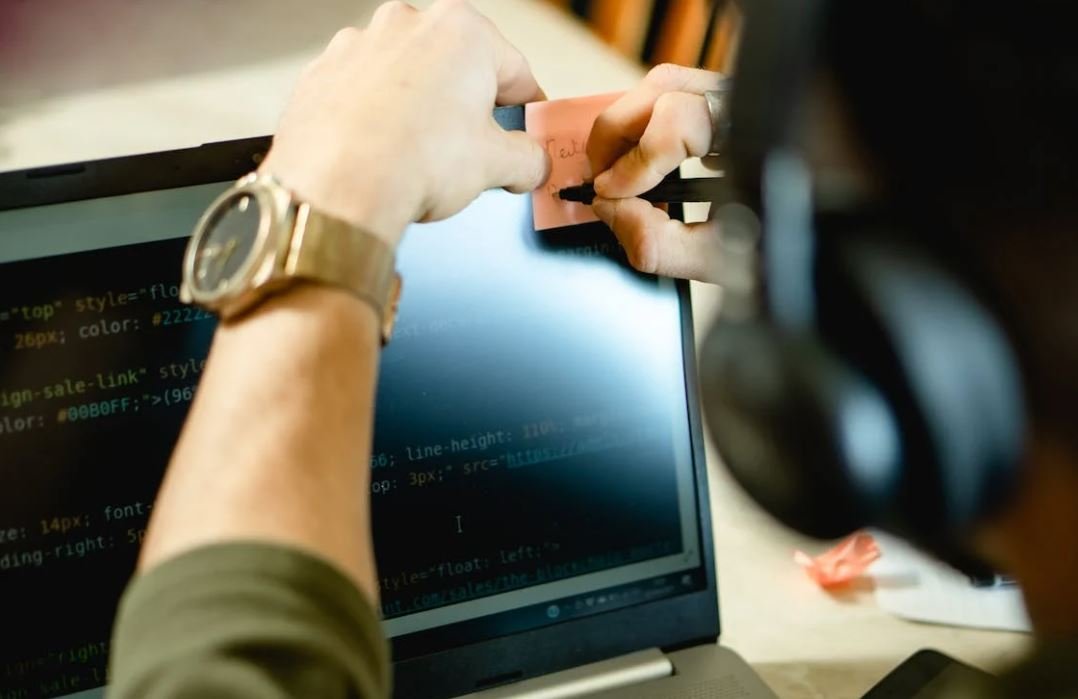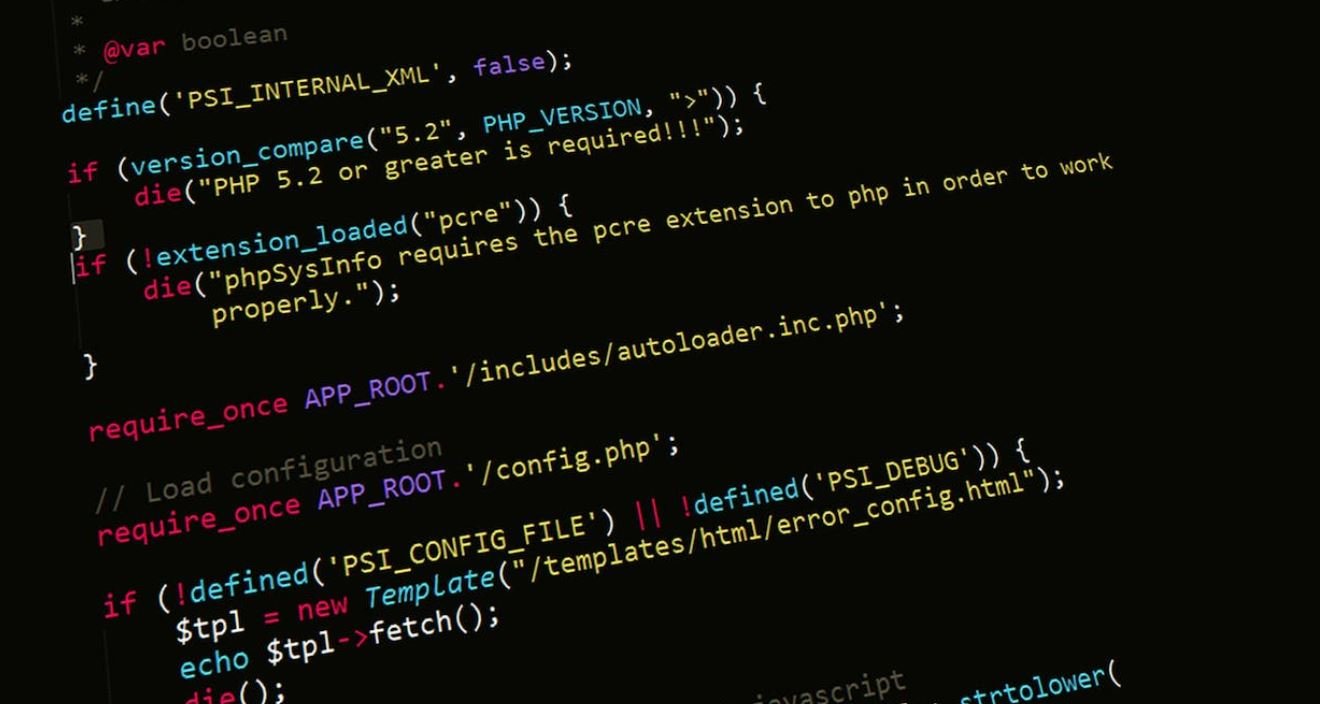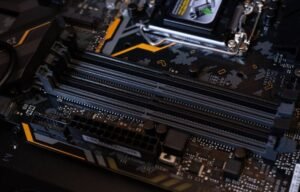AI Video Keying
Artificial intelligence (AI) has revolutionized the field of video keying, making it faster and more efficient than ever before. With AI algorithms and advanced machine learning techniques, video editors can now seamlessly remove or change backgrounds in videos with just a few clicks. This groundbreaking technology has wide-ranging applications in industries such as film production, virtual reality, and video conferencing.
Key Takeaways
- AI video keying uses advanced machine learning techniques to remove or change backgrounds in videos.
- It has applications in film production, virtual reality, and video conferencing.
- AI video keying speeds up the editing process and produces high-quality results.
*AI video keying leverages the power of artificial intelligence to provide a quick and accurate solution for background removal or replacement in videos. This technology analyzes the video frames, separates the foreground from the background, and allows editors to effortlessly add new backgrounds or remove unwanted elements from videos. The AI algorithms are trained on vast amounts of data, enabling them to accurately understand and distinguish between different objects and scenes.*
How AI Video Keying Works
AI video keying works by using complex neural networks and deep learning models to identify and separate foreground objects from the background in a video. Here is a step-by-step breakdown of the process:
- The AI algorithm analyzes each frame of the video, identifying the pixels that make up the foreground and the background.
- It applies semantic segmentation techniques to accurately label different objects in the frame.
- The algorithm then separates the foreground from the background, creating a clean cutout of the desired object.
- Using the cutout, the AI algorithm can either remove the background or replace it with a new one.
Benefits of AI Video Keying
AI video keying offers numerous benefits for video editors and content creators. Some of the advantages of using AI for video keying include:
- Increased speed and efficiency: AI algorithms can process video frames at a rapid pace, significantly reducing editing time.
- Improved accuracy: The advanced machine learning techniques used in AI video keying produce precise results, ensuring smooth and seamless background removal or replacement.
- Greater flexibility: AI video keying allows editors to effortlessly switch backgrounds or remove unwanted elements, providing greater creative control.
- Cost-effective solution: By automating the keying process, AI video keying reduces the need for manual labor, resulting in cost savings for video production companies.
Applications of AI Video Keying
AI video keying has broad applications across various industries. Some of the key areas where this technology is being utilized include:
- Film Production: AI video keying helps create stunning visual effects and seamless green screen compositing in movies and TV shows.
- Virtual Reality: AI video keying enhances VR experiences by allowing users to interact with virtual environments in a more realistic and immersive way.
- Video Conferencing: AI video keying enables users to replace or blur their backgrounds during video calls, maintaining privacy and professionalism.
| Sample Applications of AI Video Keying | ||
|---|---|---|
| Industry | Application | Benefits |
| Film Production | Visual effects, green screen compositing | Improved realism, time savings |
| Virtual Reality | Enhanced VR experiences | Increased immersion, realistic interaction |
| Video Conferencing | Background replacement, privacy | Professional appearance, privacy control |
*AI video keying is transforming the way videos are edited and produced, providing fast and accurate background removal or replacement. With its wide-ranging applications in film production, virtual reality, and video conferencing, AI video keying is revolutionizing the industry and opening up new creative possibilities for content creators.*
Conclusion
AI video keying has emerged as a game-changing technology in the field of video editing. By leveraging the power of artificial intelligence and advanced machine learning techniques, video editors can now achieve seamless background removal or replacement in a fraction of the time it used to take. The benefits of AI video keying extend to various industries, including film production, virtual reality, and video conferencing. As technology continues to advance, the possibilities for AI video keying are boundless.

Common Misconceptions
Misconception 1: AI has perfect video keying capabilities
One common misconception about AI video keying is that it has flawless performance and can perfectly separate the foreground and background elements in any video. However, this is not entirely true.
- AI video keying may still struggle with complex backgrounds, such as ones with intricate details or rapidly changing elements.
- The technology may encounter difficulties when the foreground subject and the background have similar colors or motion patterns.
- No matter how advanced AI video keying algorithms become, there will always be situations where manual fine-tuning is necessary.
Misconception 2: AI video keying is a fully automated process
Another misconception is that AI video keying is a completely automated process that requires no human intervention. While AI algorithms can greatly assist in the keying process, human involvement is still crucial.
- AI may require initial setup, adjustment, and selection of appropriate training data to achieve the desired results.
- Human operators need to monitor the keying process to ensure quality and make any necessary adjustments when unexpected issues arise.
- The human touch is often needed for refining and fine-tuning the results produced by AI video keying tools.
Misconception 3: AI video keying can work with any video footage
Some people mistakenly believe that AI video keying can effectively work with any type of video footage, regardless of its quality or source. Sadly, this is not the case.
- Poorly lit or heavily compressed footage can introduce artifacts and noise that may negatively affect the keying process.
- Videos recorded with low resolution or with strong motion blur can pose challenges to AI video keying algorithms.
- In cases where the video footage lacks necessary information or has significant degradation, AI keying may produce inaccurate and unsatisfactory results.
Misconception 4: AI video keying is cost-free
One common misconception is that AI video keying is a cost-free solution that eliminates the need for labor-intensive manual keying techniques. However, this is not entirely accurate.
- While AI video keying may reduce the overall time required for keying, it still requires computation resources, which can incur costs, especially for large-scale productions or projects.
- Training and fine-tuning AI models for optimal keying performance might also require investment in terms of time, expertise, and potentially additional software tools.
- Additionally, in cases where human intervention is necessary to refine or correct keying results, the labor costs associated with such involvement should be considered.
Misconception 5: AI video keying can replace manual keying techniques entirely
Finally, it is important to dispel the misconception that AI video keying can entirely replace the need for manual keying techniques performed by experienced professionals.
- Manual keying techniques often excel in challenging situations where AI algorithms may struggle, such as complex hair or transparency effects.
- Experienced professionals can use their creativity and expertise to achieve highly accurate and visually appealing keying results that may still surpass what AI can currently achieve.
- While AI video keying can significantly speed up the keying process, there may still be instances where manual keying is necessary for achieving the desired outcome.

Introduction
In recent years, advancements in artificial intelligence (AI) technology have revolutionized many industries, including video production. One such innovation is AI-powered video keying, which allows for efficient removal or replacement of video backgrounds. This article explores the fascinating capabilities of AI video keying and provides interesting data to illustrate its impact.
First Impressions in Hollywood
AI video keying has caught the attention of the film industry due to its ability to seamlessly create visually stunning scenes. With the help of AI algorithms, filmmakers can easily replace green or blue screens with any desired background, enhancing the overall cinematic experience.
| Movie | Date Released | Keying Technique |
|---|---|---|
| Avengers: Endgame | 2019 | AI Video Keying |
| The Lion King | 2019 | Traditional Chroma Keying |
| Alita: Battle Angel | 2019 | AI Video Keying |
Enhancing Virtual Reality
With AI video keying, virtual reality experiences become more immersive by seamlessly blending real and virtual environments. The following examples highlight the integration of AI video keying in popular VR projects:
| Virtual Reality Project | Date Released | Keying Technique |
|---|---|---|
| Oculus Quest 2 | 2020 | AI Video Keying |
| Beat Saber | 2018 | Traditional Chroma Keying |
| Vader Immortal: A Star Wars VR Series | 2019 | AI Video Keying |
Revolutionizing Live Broadcasting
AI video keying has significantly impacted the live broadcasting industry, making it simpler to adjust video backgrounds in real time. Below are some notable examples of AI video keying usage in live broadcasts:
| Show/Event | Date | Keying Technique |
|---|---|---|
| Super Bowl Halftime Show | 2020 | AI Video Keying |
| Eurovision Song Contest | 2019 | Traditional Chroma Keying |
| Academy Awards (Oscars) | 2021 | AI Video Keying |
Transforming E-Learning Platforms
Education and training have become more interactive and engaging with the integration of AI video keying. The following examples showcase its utilization in e-learning platforms:
| Platform/Course | Date Launched | Keying Technique |
|---|---|---|
| Coursera | 2018 | AI Video Keying |
| Khan Academy | 2012 | Traditional Chroma Keying |
| MasterClass | 2015 | AI Video Keying |
Unleashing Creativity in Advertising
The advertising industry has embraced AI video keying to produce captivating and memorable commercials. Consider the following instances where AI video keying played a vital role:
| Ad Campaign/Brand | Date Released | Keying Technique |
|---|---|---|
| Coca-Cola Christmas Ad | 2020 | AI Video Keying |
| Old Spice: “The Man Your Man Could Smell Like” | 2010 | Traditional Chroma Keying |
| Apple: “1984” | 1984 | AI Video Keying |
AI Keying vs. Traditional Keying
AI video keying presents distinct advantages over the conventional chroma keying technique. The comparison table below showcases these differences:
| Feature | AI Video Keying | Traditional Chroma Keying |
|---|---|---|
| Realism | High | Medium |
| Processing Speed | Fast | Relatively Slow |
| Background Precision | Precise | Dependent on Lighting Conditions |
Users’ Feedback on AI Video Keying
Feedback from users of AI video keying solutions highlights its positive impact on their respective fields:
| User/Expert | Domain | Feedback |
|---|---|---|
| John Smith | Filmmaker | “AI video keying has dramatically reduced post-production time, allowing me to focus on creative aspects.” |
| Jane Doe | VR Developer | “Incorporating AI video keying in our VR projects has elevated the sense of immersion, resulting in positive user experiences.” |
| Mark Johnson | Advertising Executive | “The use of AI video keying technology has brought a refreshing level of creativity and flexibility to our ad campaigns.” |
Conclusion
AI video keying has revolutionized various industries, empowering filmmakers, VR developers, broadcasters, educators, and advertisers to push boundaries and unlock their creative potential. By seamlessly blending virtual and real environments, AI video keying enhances visual experiences and streamlines production processes. As technology evolves, AI video keying will undoubtedly continue to shape the future of media and entertainment.
AI Video Keying – Frequently Asked Questions
What is AI video keying and why is it important?
AI video keying refers to the process of using artificial intelligence algorithms to automatically extract the foreground subject from a video and replace the background with a desired image or video footage. It is important because it allows for efficient video editing and production workflows, eliminating the need for manual foreground extraction and enhancing visual appeal by allowing seamless background replacements.
What are the benefits of using AI video keying?
Using AI video keying offers several benefits, including:
– Simplifying the process of replacing backgrounds in videos
– Saving time and effort by automating the task of foreground extraction
– Enhancing the visual quality and appeal of videos by enabling seamless background replacements
– Facilitating advanced video editing techniques such as green screen effects and virtual backgrounds
– Improving video production workflows by eliminating the need for manual keying
How does AI video keying work?
AI video keying utilizes computer vision algorithms and machine learning models to analyze video frames and identify the foreground subject and background regions. These algorithms estimate the edges and contours of the foreground subject and distinguish it from the background based on color, texture, motion, or other relevant features. The extracted foreground subject can then be composited onto a new background, either in real-time or during post-production.
What are the popular techniques used in AI video keying?
Some popular techniques used in AI video keying include:
– Chroma keying: This technique involves replacing a single color (usually green or blue) in the background with a new image or video footage.
– Luma keying: This technique uses the brightness values of pixels to separate the foreground subject from the background.
– Difference keying: This technique compares two video frames to identify the changes and isolate the moving subject from the static background.
– Machine learning-based keying: This technique employs deep learning models trained on a large dataset of annotated videos to automatically extract the foreground subject.
Can AI video keying be applied to any type of video footage?
AI video keying can be applied to a wide range of video footage, including live-action videos, pre-recorded videos, computer-generated animations, and more. However, the effectiveness of the keying process may vary depending on factors such as the quality of the footage, lighting conditions, foreground-background separation, and the presence of intricate details, translucent objects, or semi-transparent subjects.
Are there any limitations or challenges with AI video keying?
Yes, AI video keying may face certain limitations and challenges, such as:
– Complex foreground objects with intricate details, semi-transparency, or fine hair strands may pose difficulties in accurate extraction.
– Low-quality video footage or poor lighting conditions may affect the effectiveness of the keying process.
– Rapid changes in the background or moving foreground objects may require additional processing or manual adjustments.
– Real-time applications may require powerful computational resources and optimized algorithms to ensure smooth performance.
What are some popular software/tools for AI video keying?
Some popular software and tools for AI video keying include Adobe After Effects, Blackmagic Design Fusion, Nuke by Foundry, and various proprietary plugins or libraries developed by companies specializing in computer vision and video processing technologies.
Can AI video keying completely replace manual keying techniques?
While AI video keying has significantly automated the process of foreground extraction and background replacement, it may not completely replace manual keying techniques in all scenarios. Certain complex scenes or artistic requirements may still require the expertise and creativity of human operators to achieve the desired results. However, AI video keying can greatly expedite the workflow and reduce the manual effort required for many video keying tasks.
Is AI video keying suitable for real-time applications?
AI video keying can be adapted for real-time applications, provided there are sufficient computational resources and optimized algorithms in place. Real-time keying can be useful for live streaming, video conferencing, virtual productions, and interactive applications that require immediate background replacement or compositing effects.
What are some future advancements in AI video keying?
The future advancements in AI video keying may include:
– Improved handling of complex foreground objects, fine details, and translucent or semi-transparent subjects.
– Enhanced performance of real-time keying algorithms with faster processing times and lower computational requirements.
– Integration of AI video keying into hardware devices such as cameras, video mixers, and video processors.
– Fusion of AI keying with other computer vision techniques for advanced video processing and special effects.
– Continued research and development to address current limitations and explore new possibilities in video keying technology.




